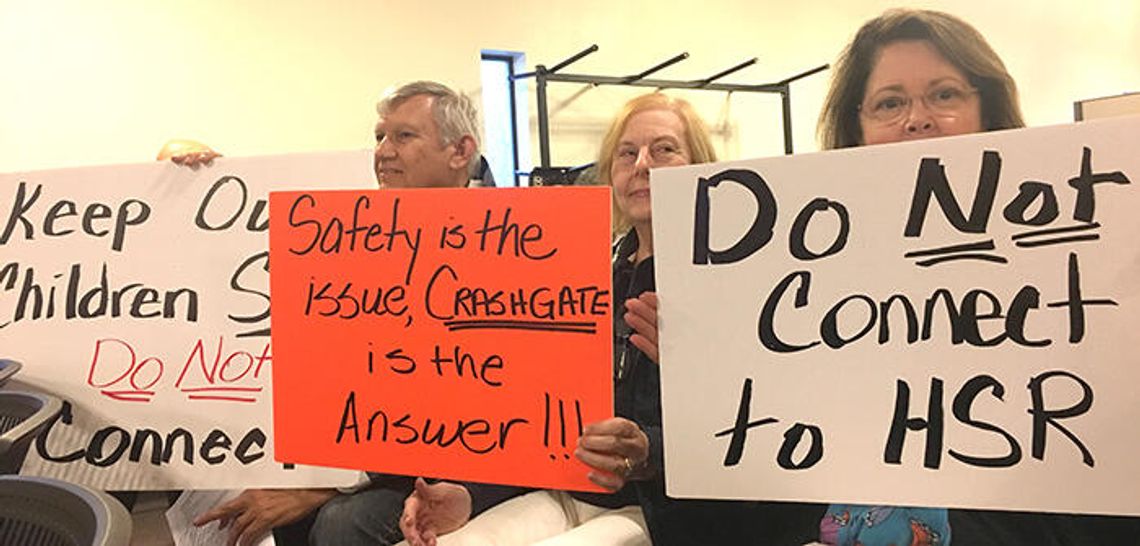Installation of a crash gate where two roads are to connect with the proposed Roger Hanks Extension was the compromise between Dripping Springs city leaders and concerned residents May 16.
The Dripping Springs City Council approved, by a 4-0 vote, Phase 1 of the project, which would eventually create a loop connecting U.S. 290 to Ranch Road 12.
“It was a win-win-win for everybody and it gives us the greatest flexibility,” James Rienstra, Hidden Springs Ranch resident, said. “It maintains the integrity of our neighborhood and it doesn’t impede the loop.”
Jim Martin, a consultant working with the city of Dripping Springs, said engineering firm HDR in February began exploring options for the city’s part of the RHP Extension.
Dripping Springs ISD would construct the parkway from U.S. 290 to the Dripping Springs High football stadium. The city’s part involves construction from the football stadium to the Heritage subdivision on Ranch Road 12.
Martin said HDR started out with five recommendations and whittled it down to two.
Option 1, which was the option that was approved, “showed connectivity,” and has a 25 mile-per-hour speed limit around a curve near the football stadium, Martin said. While the option would require acquisition of additional right-of-way (ROW) for the project, it could allow for two crash gates for emergency vehicles to have ingress and egress.
“It’s just a matter of a few thousand dollars for the city,” Martin said.
Martin said the city’s transportation committee for safety preferred Option 1 over Option 2, which featured a 30 mile-per-hour speed limit around that same curve.
But residents who lived in Hidden Springs Ranch, a subdivision near the extension, voiced their concerns during the public hearing about the possible influx of traffic that could result from the new roadway.
One resident felt the city was accommodating the school district by not taking more parking spaces from the lot near the stadium. Martin said Option 1 would eliminate 11 spaces from the lot.
The resident also was concerned traffic would create “chaos in our neighborhood,” and teenagers wouldn’t abide by posted speed limits.
“You’re going to create an unsafe neighborhood,” the resident said.
Peter Dirkin, HSR resident who lives near the new football stadium, said safety is “critical,” as is the integrity of the neighborhood.
But Dirkin said running “Ranch Road 12 traffic” through the neighborhood would put neighbors and wildlife in jeopardy.
He added the installation of a crash gate is “fine,” but said there are three points of ingress and egress already for the HSR neighborhood.
“I’m opposed to connectivity because it will disrupt our peace and quiet,” Dirkin said. “It’s not necessary to run this through an existing subdivision.”
Several residents were concerned about the 20-foot wide roads in the HSR subdivision and how it could handle the additional traffic.
John Kroll, Dripping Springs council member who recused himself from the discussion, but made a public comment on his own behalf, said the city’s strategic plans and visioning over the last decade have stipulated connectivity between subdivisions.
One resident welcomed the loop, as it was a way for guests and visitors, as well as those who attend Dripping Springs High events, to get around the area faster.
Bill Foulds, Dripping Springs city council member, said if the city doesn’t have access between neighborhoods now as the parkway is being buiilt, “it’s not going to happen.”
“At some point, when this town builds out … and the subdivisions start to build up more and we’re thinking more globally for connectivity, it’s going to be a necessary thing,” Foulds said.
Despite concerns with the road, Dirkin and Rienstra both felt the crash gate was “what we were hoping for.”
“I feel the loop is going to have a negative effect on property values, but I think we can hopefully mitigate some of that with this compromise,” Dirkin said.











